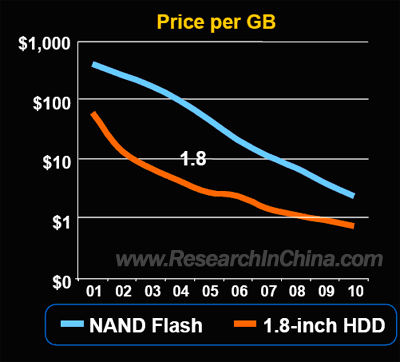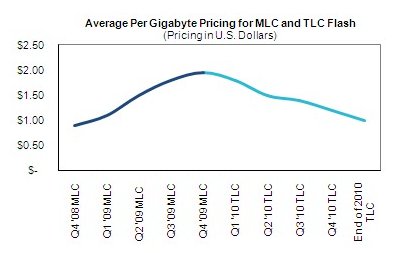- Joined
- Jul 11, 2008
- Messages
- 5,769
- Points
- 48
http://www.appleinsider.com/articles/11/10/07/apple_initiates_pre_orders_for_iphone_4s.html
http://www.differencebetween.com/difference-between-iphone-4s-16gb-and-32gb-and-64gb/
What does the prices say? RIP-OFF memory prices! literally!
There is no other differences except of more flash memory capacities between the iPhone models priced US$199 US$299 & US$399
So Apple is making sucker customers pay extra US$100 for just another 16GB of flash memory or extra U$200 for another 48GB.
What does the maths say? That is @US$6.25/GB and $4.17/GB respectively for different models.
THAT IS RIP-OFF! No wonder there is US$76 billion in bank A/C of Apple Inc!
They are another Wall Street?
 :*:
:*:
Read on the market prices of flash memory it is just about and slightly below @US$1/GB when Apple Inc sell them to sucker buyer @US$6.25/GB & @$4.17/GB dozens of millions of suckers will pay!

The 16GB, 32GB and 64GB iPhone 4S models sell for $199, $299 and $399, respectively, with a 2-year contract in the U.S.
http://www.differencebetween.com/difference-between-iphone-4s-16gb-and-32gb-and-64gb/
Difference Between iPhone 4S 16GB and 32GB and 64GB
Oct 4th, 2011 | By Andrew
iPhone 4S 16GB vs 32GB vs 64GB | Speed, Features and Performance
Apple releases iPhone 4S today with Apple A5 Processor and iOS 5.iPhone Prices are comparatively cheaper than iPhone 4. iPhone 4S comes with difference memory capacity and color to cater the wide range of user market. iPhone 4S mainly packed with 16GB,32GB and 64 GB internal memory. This is basically storage capacity only and which is not going to affect any speed or performance. Prices differ depends on the internal memory capacities.
What does the prices say? RIP-OFF memory prices! literally!
There is no other differences except of more flash memory capacities between the iPhone models priced US$199 US$299 & US$399
So Apple is making sucker customers pay extra US$100 for just another 16GB of flash memory or extra U$200 for another 48GB.
What does the maths say? That is @US$6.25/GB and $4.17/GB respectively for different models.
THAT IS RIP-OFF! No wonder there is US$76 billion in bank A/C of Apple Inc!
They are another Wall Street?

 :*:
:*:Read on the market prices of flash memory it is just about and slightly below @US$1/GB when Apple Inc sell them to sucker buyer @US$6.25/GB & @$4.17/GB dozens of millions of suckers will pay!

http://www.computerworld.com/s/article/9180943/NAND_flash_memory_pricing_to_plummet_to_1_per_GB
NAND flash memory pricing to plummet to $1 per GB
Drop in 3-bit-per-cell NAND flash will jumpstart SSD sales, says iSuppli
By Lucas Mearian
August 19, 2010 12:27 PM ET
Computerworld - After two years of inflated prices, NAND flash memory prices are expected to dip down to a key $1 per gigabyte level, according to a new report by research firm iSuppli.
The precipitous drop marks the first time NAND flash pricing has fallen to the $1 per GB threshold since the fourth quarter of 2008, when consumer-class NAND pricing averaged 90 cents per GB.
Skyrocketing NAND flash prices last year subdued what had been a booming solid state drive (SSD) market. The price of flash memory chips rose to $4.10 per GB in the second quarter of last year.
Pricing for NAND flash memory had been expected to flat-line until next year, when NAND flash chip fabricators will be able to reinvest their profits to ramp up production and begin selling higher-density products, industry experts say.
But in a report released today, iSuppli forecasts that NAND flash pricing for 3-bit-per-cell NAND will average $1.20 per GB for the entire fourth quarter and will then drop to $1 by the end of this year. The $1 per GB level is considered a threshold that will drive adoption of solid state drives, iSuppli stated.
The recent price drop is reflected in the first quarter of 2010, when pricing for 3-bit-per-cell (or triple-level cell) NAND averaged $1.80 per GB and 2-bit per cell flash was at $2.05, iSuppli stated.
"When NAND pricing first fell below the $1 level at the end of 2008, many observers opined that it would sound the starting gun for solid state storage, allowing the technology to be cost competitive with hard disk drives in PCs for the first time," Michael Yang, iSuppli senior analyst for memory and storage, said in a statement. "However, during the following quarters, pricing rose because of strong demand and constrained production capacity, limiting the appeal of SSDs to low-volume servers in data centers and preventing widespread adoption in high-volume business and consumer PCs."
Objective Analysis research analyst Jim Handy disagreed with iSuppli's forecast, saying NAND flash memory is still suffering from a shortage and that prices are going to stay "pretty flat till the second half of next year".
"Then they will drop ... darn fast. The cost of the just-announced Intel/Micron 25nm, three-bit NAND should be 40 cents per gigabyte once volume is reached," he said. "In other words, I disagree greatly with iSuppli. So does history."
Objective Analysis came out with a report earlier this week that also stated SSDs are poised for rapid growth in certain niche markets.
The report, Solid State Disk Market Outlook 2010, states that while SSDs haven't found widespread acceptance in general-purpose PCs, those applications that benefit from this technology will drive the server SSD market to grow at an impressive 60% year over year rate.
1
2
3
Next page
SSDs could fall below $1 per GB by the end of the year
by Pete Mason on 20 August 2010, 13:14
Tags: iSuppli
Quick Link: HEXUS.net/qazny
Solid-state drives may offer incredible speeds, but for the most part, the cost of admission is prohibitively high. According to market-research firm iSuppli, though, prices are set to drop dramatically towards the end of this year to as little as $1/GB (£0.64).
A big driving force in the decreasing cost of NAND is said to be the abundant availability of triple-level-cell (TLC) chips, which allow for higher storage-densities than SLC and MLC memory. This could lead to flash memory being cheaper than it has been since the end of 2008, following which NAND saw a dramatic price increase to over $2 per GB at the end of last year.
Hopefully these shifts in the market price will make their way to consumers, making smaller SSDs affordable to the masses and higher-capacity models more than just a pipedream. If the predictions come to pass, we could see 32GB and 40GB drives costing less than £50 for the first time.
However, senior analyst Michael Yang thinks it may be too little, too late, commenting that "traditional HDDs gained a lot of additional ground during the past few years in terms of rising capacity and falling prices. In fact, HDDs have gained so much ground that SSDs now are in danger of never regaining their competitive footing".
With capacity continuing to increase, it's unlikely that hard drives will be disappearing any time soon, but as prices fall, SSDs will start to look more and more attractive.
How cheap will SSDs have to get before you will be convinced to take the plunge? Let us know in the HEXUS.community forums.

Related Reading
Buffalo launches DriveStation Velocity
App store revenue to almost double this year, most of it Apple
Plextor expands SSD line-up
iSuppli: smartphone market shrank in Q1
Intel gains chip share in Q1 despite recall
Corsair ships 480GB Force Series SSDs
Apple is the world’s biggest OEM semiconductor buyer
Redefine the Meaning of Speed with Plextor SSDs
Corsair Announces Major Advance in High-Capacity SSDs
Japan crisis stops a quarter of global silicon wafer production
HEXUS.community :: Latest Comments
Last edited:

















 Tear down Oxley road & move here!
Tear down Oxley road & move here!






